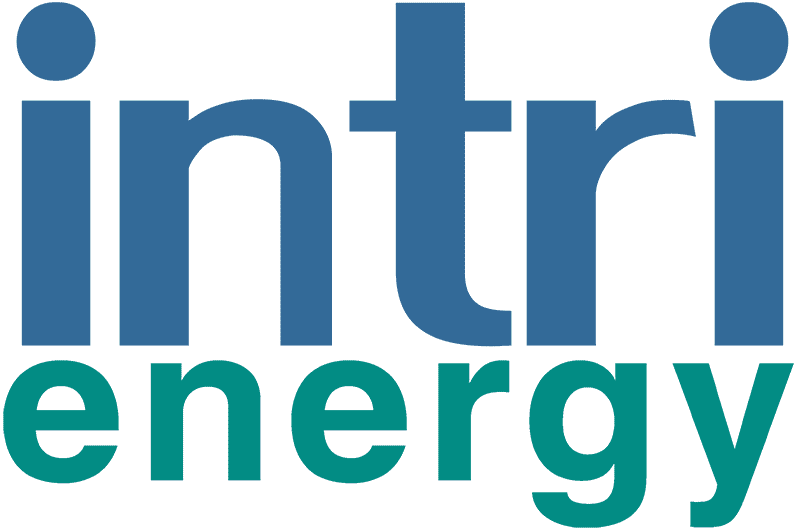Solar Energy Production: A Beginner's Guide
- IntriEnergy

- Oct 17, 2021
- 3 min read

Solar power is a renewable, sustainable and increasingly popular energy source. It's not limited to generating electricity for your home or business - it can also provide heat for water, cooking and space heating. The technology works by converting sunlight -- or solar radiation to be exact-- into electricity using photovoltaic cells. These cells are semiconductors that work when light hits them and free electrons which then pass over the bus bars and create a direct current which can then be converted and used in residential and commercial applications.
1. What is solar energy?
Solar energy is generated by harnessing the sun's spectrum of light and converting it into useable electricity.
When photons coming from the sun reaches solar panels containing photovoltaic (PV) cell technology it then converts solar radiation into electricity.
When solar panels are placed in an interconnected manner in the sunlight, they start producing current and voltage in the form of direct current (DC). This current is then passed through an inverter so that it can be converted into alternative current (AC), which can then be used by appliances and other applications.
2. How does the photovoltaic cell work?
The PV cell technology converts solar radiation into electricity by using semiconductors. When the sun hits the semiconductor within the PV cell, electrons are freed and bus bars collect the running electrons which results in electric current.
When sunlight falls on these cells, it excites atoms causing them to release those electrons that flow through wires creating an electrical charge.
3. What are the different solar panel types and their applications?
Solar panels come in three different types: monocrystalline, polycrystalline and thin film.
Monocrystalline solar panels are the most efficient at converting sunlight into electricity because they have a uniform crystal structure that captures light from all angles - thus creating more power output per panel than other types of cells.
Polycrystalline Solar Cells contain multiple silicon crystals which capture energy from various sources but aren't as efficient as monocrystals since their efficiency is lower due to structural barriers within the cell itself. This type of PV cell is cheaper in price so it's been used by large utility companies for commercial or grid-tie power systems where cost minimization/saving is critical to achieving return on investment (ROI). In residential installations, its affordability makes it popular among homeowners looking to make a long-term investment.
Thin film solar panels are the least efficient due to their chemical makeup and they're also more costly than other types of cells but do offer flexibility in applications where weight is an issue such as on space craft or limited roof area situations like RVs and trailers.
These technology based solutions play a critical role in enhancing, expanding and securing energy access for individuals while communities focus on building stronger economies through development projects that benefit everyone involved - using renewable energy sources has never been so important.
4. What are the benefits of using solar power instead of traditional methods (i.e., fossil fuels)?
Solar power is clean, efficient and universally available - which makes it a sustainable energy source that can be relied on for years to come.
When using solar panels instead of traditional sources locally, there's no generation or transmission losses meaning you're not wasting valuable resources when producing this electricity. As an added benefit, the system operates silently without emitting greenhouse gases into the atmosphere making it more environmentally friendly than other methods currently being used around the world.
The benefits don't stop here... because solar energy doesn't rely on fuel costs like petroleum based fuels, they are becoming increasingly affordable and more stable in most parts of the world resulting in reduced emissions from burning fossil fuels directly related to climate change. Solar technology has also been shown to help lower your carbon footprint by producing clean electricity that reduces the need for carbon based fuels.
The benefits don't stop here either... Solar technology can be incorporated into buildings through the use of photovoltaic (PV) cells reducing reliance on traditional utilities by allowing engineers and architects to design larger structures capable of generating enough electricity each year to meet building demands while offsetting fossil fuel consumption used during non-peak hours. This means manufacturers can create more efficient buildings that require less energy which in turn creates more sustainable buildings that are resilient to changes over time.
Building with solar panels is currently being used by large companies around the world including Apple, Amazon and Walmart who have already made significant strides towards using clean technologies for powering their operations - this also reduces emissions from transporting materials or products back and forth across long distances which can also be a source of pollution.
Because PV cells come in different sizes depending on how much electricity you need per year, they make it possible to offset your total monthly usage at home reducing your reliance on traditional utility providers combined with net metering credits if applicable resulting in lower electric bills.




Comments